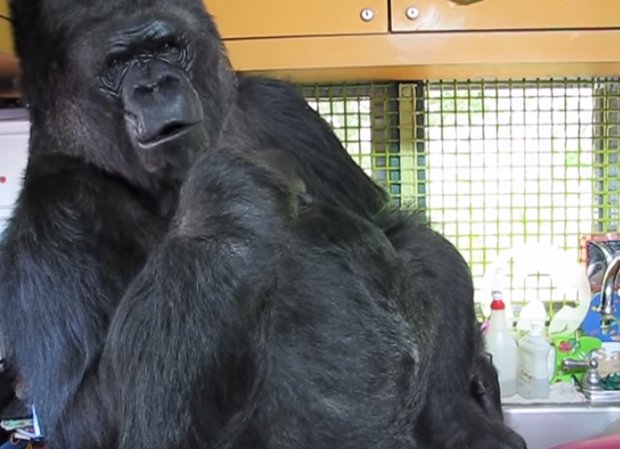We reach more than 65,000 registered users in Dec!! Register Now

Apes Closer to Speaking than We Give Them Credit For
- August 19, 2015
- 1079 Views
- 0 Likes
- 0 Comment
The famous gorilla Koko is best known for having learned a good deal of American Sign Language from humans, as well as for understanding about 2,000 spoken English words. Although speaking skills are not for her, the simple sounds she does make are surprising, a new study says-and could change a ...
The famous gorilla Koko is best known for having learned a good deal of American Sign Language from humans, as well as for understanding about 2,000 spoken English words.
Although speaking skills are not for her, the simple sounds she does make are surprising, a new study says-and could change a perception that humans are alone in their capacity for speech, among our close evolutionary relatives.
In 2010, Marcus Perlman, now a researcher at the University of Wisconsin-Madison, started research at the Redwood city, Calif.-based Gorilla Foundation, where Koko has spent more than 40 years living immersed with humans. Koko has interacted for many hours daily with psychologist Penny Patterson and biologist Ron Cohn.
“I went there with the idea of studying Koko's gestures, but as I got into watching videos of her, I saw her performing all these amazing vocal behaviors,” said Perlman.
The vocal and breathing behaviors Koko had developed were not necessarily supposed to be possible, he said.
“Decades ago, in the 1930s and '40s, a couple of husband-and-wife teams of psychologists tried to raise chimpanzees as much as possible like human children and teach them to speak. Their efforts were deemed a total failure,” Perlman said. “Since then, there is an idea that apes are not able to voluntarily control their vocalizations or even their breathing.”
Instead, the thinking went, apes' calls pop out almost reflexively in response to their environment-the appearance of a dangerous snake, for example.
The vocal repertoire of each ape species was thought to be fixed, Perlman added. They didn't really have the ability to learn new vocal and breathing-related behaviors. These limits fit a theory on the evolution of language, that the human ability to speak is unique among living primates (apes, monkeys and their close relatives).
“This idea said there's nothing that apes can do that is remotely similar to speech,” Perlman said. “And, therefore, speech essentially evolved-completely new-along the human line since our last common ancestor with chimpanzees.”
But in a study published online in July in the journal Animal Cognition, Perlman and collaborator Nathaniel Clark of the University of California, Santa Cruz, sifted 71 hours of video of Koko interacting with Patterson and Cohn and others.
They identified repeated examples of Koko performing nine different, voluntary behaviors that required control over her vocalization and breathing. These were learned behaviors, not part of the typical gorilla repertoire, the researchers said.
Among other things, Perlman and Clark watched Koko blow a raspberry (or blow into her hand) when she wanted a treat, blow her nose into a tissue, play wind instruments, huff moisture onto a pair of glasses before wiping them with a cloth and mimic phone conversations by chattering wordlessly into a telephone cradled between her ear and the crook of an elbow.
“She doesn't produce a pretty, periodic sound when she performs these behaviors, like we do when we speak,” Perlman said. “But she can control her larynx enough to produce a controlled grunting sound.”
Koko can also cough on command-not particularly groundbreaking human behavior, but impressive for a gorilla because it requires her to close off her larynx.
“The motivation for the behaviors varies,” Perlman said. “She often looks like she plays her wind instruments for her own amusement, but she tends to do the cough at the request of Penny and Ron.”
These behaviors are all learned, Perlman figures, and the result of living with humans since six months after her birth in 1971.
“Presumably, she is no more gifted than other gorillas,” he said.
This suggests that some of the evolutionary groundwork for the human ability to speak was in place at least by the time of our last common ancestor with gorillas, he added, around 10 million years ago.
“Koko bridges a gap,” Perlman said. “She shows the potential under the right environmental conditions for apes to develop quite a bit of flexible control over their vocal tract. It's not as fine as human control, but it is certainly control.”
Orangutans have also demonstrated some impressive vocal and breathing-related behavior, according to Perlman, indicating the whole great ape family may share the abilities Koko has learned to tap.









